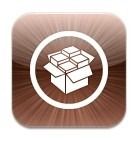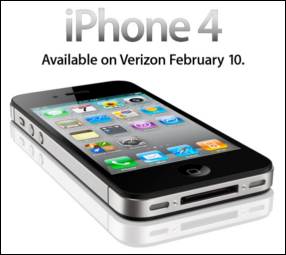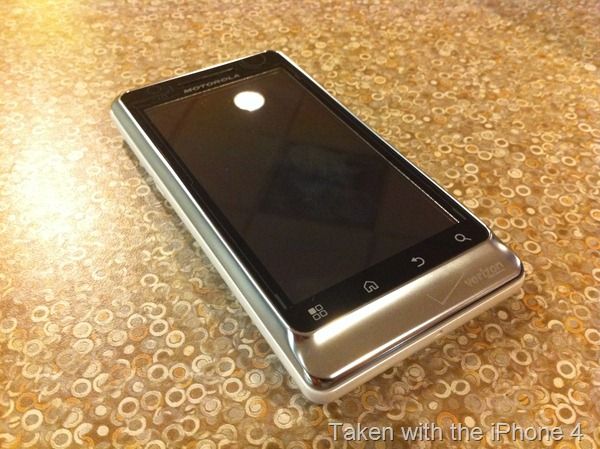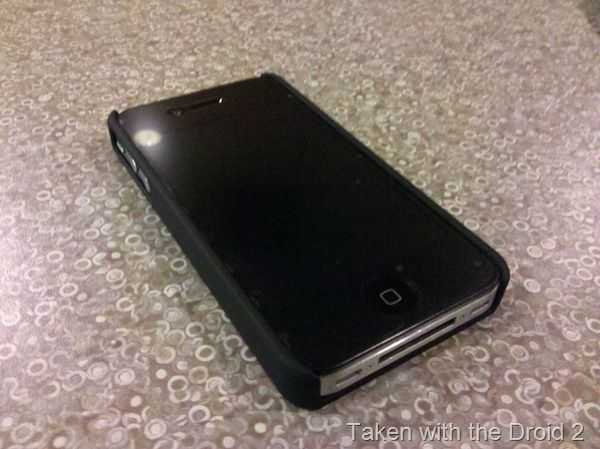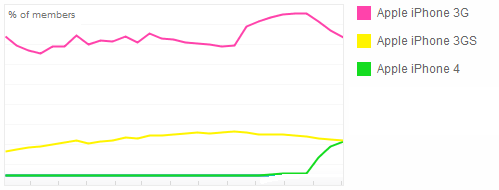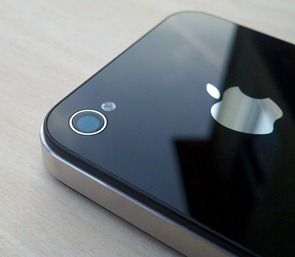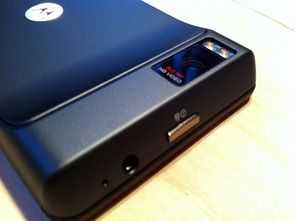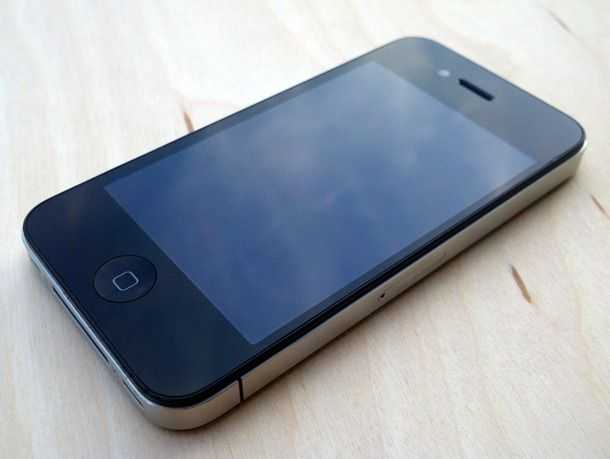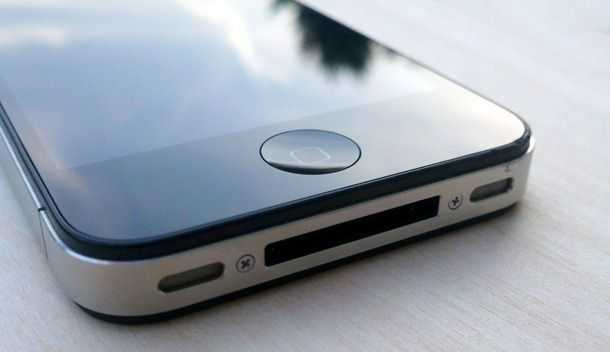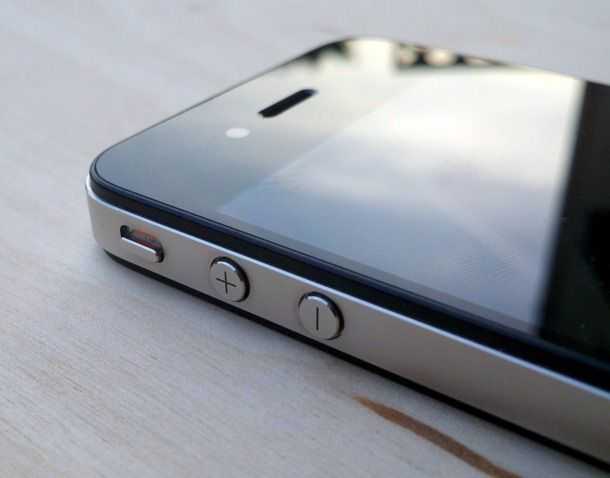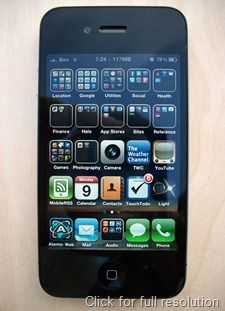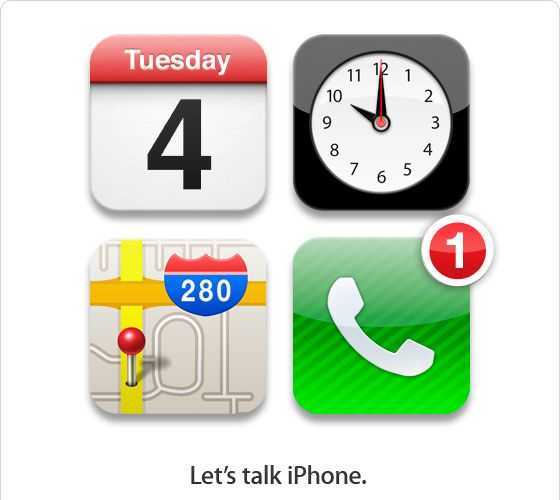
iPhone 4S available starting October 14th on Sprint, Verizon, and AT&T in:
- United States
- Canada
- Australia
- United Kingdom
- France
- Germany
- Japan
- $199 – 16GB
- $299 – 32GB
- $399 – 64GB
- dual-core A5 CPU, providing up to 2x CPU performance and up to 7x graphics performance (over iPhone 4)
- iOS 5 with Siri voice assistant
- Same outer design as iPhone 4 but with redesigned antenna
- 8MP camera capable of 1080p recording. No mention of front camera so we’re assuming it’ll be the same 0.3MP front camera
- World phone – CDMA and GSM in one phone
- Everything else is pretty much the same as the iPhone 4 except there is now a 64GB option for the iPhone 4S
16: Apple store still down. Apple.com not updated to show anything new yet. Pricing for the iPhone 4S is the usual but they’re adding a 64GB option finally: $199 (16GB), $299 (32GB), and $399 (64GB), all on contract of course. Availability for the iPhone 4S is October 14th. Pre-orders start on the 7th. Still nothing about Sprint or an iPhone 5. I’ll be completely blown away if the BRG story is true. For those due for an upgrade, Apple is dropping the iPhone 3GS to free and the iPhone 4 to $99, pretty sweet. Oh hey they just said the iPhone 4S will be on AT&T, Verizon, and Sprint.
15: Still showing more Siri stuff. Reminders can be set through voice which will integrate with the Reminders app that’s coming with iOS5 (something I used to use the old Siri app for frequently). If Siri doesn’t know what you’re talking about, it’ll use Wolfram Alpha to try to give you some info. Examples given are currency exchange rates, definitions, and “how many days until X”. Now they’re showing dictation through Siri. Siri learns your voice according to Apple. Apple is calling Siri beta at launch. Dictation processing happens remotely on a server, which means it might have to fall back to less precise methods when you don’t have a connection, or maybe it won’t work at all.
14: Apple demoing the assistant software which is using the original name (before Apple purchased the company) “Siri”. Some of the queries you’ll be able to ask it: What’s the weather like today? What time is it in Paris? Set an alarm for 6am. Stocking checking, restaruant finding, directions, lots of functionality. The key here is that the user doesn’t need to know what they can or cannot ask. Just ask it something reasonable and it can probably do it. A cool demo of a text coming it: Siri reads it, user asks if they have any appointments at 12pm on Friday, Siri responds that there is nothing on the calendar, then the user asks to reply to the text, all by voice and the button on the Bluetooth headset. Pretty cool… will this only be available with the iPhone 4S?
13: Hoping we have the option to choose between 720p and 1080p video capture, as the larger size is sometimes not necessary for both storage and editing reasons. Apple isn’t always big on choices though…. Apple now talking about their new Assistant software which has been detailed pretty heavily in the media already. This is Apple’s version of voice control, which will use natural language to do a lot of stuff. Don’t know about you folks, but I’ve always found voice-control to be underused because I don’t like looking like an idiot in public. Great for the car and when you’re alone, but otherwise it’s just weird. If anyone can make is socially acceptable to talk to your phone without a real person on the other end, it’s Apple.
12: The iPhone 4S is a world phone, featuring both CDMA and GSM technology in one model. International travelers rejoice. New 8MP camera, backside illumination (for better low-light performance). Apple says the iPhone 4S camera can collect 73% more light than the iPhone 4 which should mean even better photos. There’s also a hybrid IR filter, but I’m not sure exactly what that does! The 4S takes pictures way faster than other smartphones on the market. 1.1 seconds to first photo for the iPhone 4S compared to 3.7 seconds for the Droid Bionic, then 0.5 seconds to a second picture, compared to 1.6 seconds for the Bionic. Ouch. 1080p video recording for the iPhone 4S along with video image stabilization (probably software-based).
11: [No mention of Steve Jobs yet. I can’t imagine that won’t say something about him.] Infinity Blade 2 is launching 12/1/11. Apple manages to increase processing power and also raise battery life, they won’t launch a phone without increasing these it seems, wish other companies would follow that lead. Wow finally, an antenna redesign; but I thought you said it wasn’t broken, Apple? iPhone 4S has HSDPA for up to 14.4 Mbps download. Upload is still at 5.8 Mbps (that’s IF your carrier supports those speeds.) Apple says their technology is just as fast as the HSPA+”4G” phones that some carriers have been pushing. The real question is whether or not the carrier will support such speeds through HSDPA…
10: iPhone 4S is official. Same design outside, new guts inside. Apple’s dual-core A5 CPU (same as the iPad), up to 2x faster than the current CPU in iPhone 4 (A4). Dual core graphics as well which Apple says can provide up to 7x increase in performance. President of Epic Games (they make the Unreal Engine, which powers Infinity Blade, and others) is on stage to talk about the iPhone 4S and gaming. They just announced Infinity Blade 2. The first one was pretty good, but the on-rails aspect killed the experience. Next one appears to be set in an Asian location.
9: Finally looks like they’re moving onto the iPhone. Nothing new before recapping the success of the iPhone 4. They’re calling it the “#1 portable game player”. I call BS on that one. Now recapping iMessage which will work across iPod Touch, iPhone, and iPad. There’s a white version of the iPod Touch coming. Cool?
8: Moving back to the iPod. I could have sworn that the invitation said “Let’s talk iPhone”. Oh hey look up there at the top of the post, it most definitely does. I’m starting to think that the missed call notification is telling us that Apple didn’t make it’s deadline and won’t have any iPhone to show off today! Showing 16 new virtual clock-faces for anyone using the iPod Nano as a watch.
7: New app from Apple called Find my Friends. It’s like Google’s Latitude, except from Apple. Time location sharing so you are only sharing where you are at certain times during the day. Oh lord, now they’re recapping iTunes match. I hope the folks there at the conference know what they’ve signed up for. All of this seems to be building to something underwhelming… we’ll have to wait and see.
6: They are going over big iOS 5 features, nothing new so far. This feels like a lot of filler information…. Oh here’s something new, iOS5 is coming on October 12th. Why not today?! iCloud info coming right up. More recap… maybe Apple thinks that they waited so long for their usual iPhone announcement that we forgot what they said at WWDC? Engadget says jokingly “Lots of wonderful things to be found in these clouds.” Agreed.
5: Moving onto iOS. They’ve got a chart up for mobile software market-share and Android is colored green, isn’t that cute! iOS is 43% while Android is 33%, they aren’t far behind and Apple isn’t trying to cover that up. Rim is the next shown on the chart at 17% and everyone else is 7%. Wait a minute, Fusion Garage’s Grid OS isn’t on here, there must be a mistake! Apple says there are 500,000 apps in the app store now (last we heard was some 300,000); 140,000 of those are iPad specific. Honeycomb-specific apps are now somewhere in the thousands still, I think.
4: Now onto iPhone stats. 125% growth year-over-year for the iPhone, compared to the rest of the market which grew 74% (according to Apple). #1 in satisfaction followed by HTC, Motorola, LG, etc. (yada yada). Moving on to the iPad. I want to tell Apple we (tech folk) don’t need a recap, but I suppose this is all for investors, analysts, and the like.
3: Still chatting about growth. Anyone with Apple stock will be please, as usual. Some of these things remind me of the book “How to Lie with Statistics”. Surprising to see Apple talking so much about the iPod; this is an iPhone event after all… right, Apple?
2: Talking about retail stores and just pointed out that Apple’s store in Shanghai saw 100,000 people visit in the opening weekend… a recent LA store took a month to reach that many people. Also noting that the Hong Kong store sold more Macs on opening day than in any other Apple store in the world. Clearly there is going to be some big Apple+Asia news coming up.
1: Apple store is down. Par for the course. iCloud.com is still up and offering login for developers. Event is beginning with a lot of talk about how Apple has grown and released a number of bar-setting products. Classic Apple event format so far!
Today is the big day for Apple to show the world its latest iPhone. We’ll be updating this post with the major developments as Apple’s event proceeds. Rather than doing a minute by minute live-blog, we’ll be watching the live-blogs and updating in numbered chunks. Be sure to refresh every now and then.
Rumors are swirling about the possibility of an iPhone 4S, and iPhone 5, or perhaps both. There’s also been pretty wild stories about Sprint getting a short-term WiMax exclusive on the iPhone 5, leaving AT&T and Verizon out of the loop until a few months later. I don’t think Apple would strike such a deal and frustrate loyal customers on the other carriers, but BGR says they got the info from a rock solid contact, so we’ll have to wait and see.
My own predictions for which (if any) 4G networks the iPhone 5 will feature are here, though I didn’t include Sprint as not much had been heard at that point about the carrier getting the iPhone.
I for one am hoping that iOS 5 launches today for those devices that will support it. Feels long overdue. Aside from software and phones, there is going to be a lot of reading between the lines to be done. Steve Jobs’ recent resignation from the CEO position is well known by investors and tech folk alike. This event will be as much about the iPhone as it is about showing that Tim Cook is a more than qualified and inspired CEO.
Oh and don’t forget, if you are going to trade-up for the next iPhone, you can sell your old device pretty darn easily through Gazelle. If you go start the process now, you can lock in the current trade-in price (with no commitment) before it drops following the announcement.


